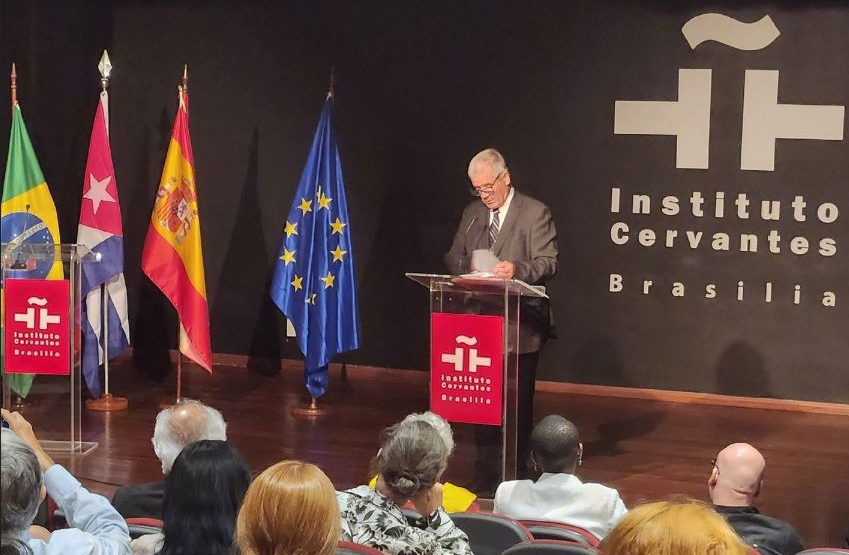As part of efforts to promote the Spanish language, the Cuban Embassy in Brazil held a reading by five Cuban authors, including José Martí and Alejo Carpentier, at the capital's Cervantes Institute.
In addition to listening to the texts of the literary geniuses, 20 artistic engravings by the renowned painter Nelson Domínguez were presented, in which the exquisite magic of color and the strange sensuality of Afro-Cuban religiosity can be perceived.
With exquisite verbiage, the Cuban ambassador to Brazil, Adolfo Curbelo, alluded to Martí, not only for his decisive role in the emancipation, but also for his vast literary legacy.
From Cuba's National Hero, the diplomat read Our America, a text that first appeared in New York's La Revista Ilustrada on January 1, 1891 and on January 30 of the same year in Mexico's Partido Liberal.
The ambassador reviewed the phrase "the vain villager believes that the whole world is his village...", an image of a man who does not perceive foreign policy in general and the threat of imperial power in particular.
Our America is considered one of the fundamental works of Marti's ideology and a particularly outstanding piece in the history of Latin American ideas, defending and developing the continental identity under new perspectives.
Of the great novelist Carpentier, the diplomat pondered his Miguel de Cervantes Prize, awarded in 1977, and read excerpts from the baroque work El reino de este mundo (The Kingdom of this World).
Curbelo also referred to ethnomusicologist Fernando Ortiz and his counterpoint of sugar and tobacco, reading a fragment on sugarcane and the solanaceous plant that, although different, since one needs the sun and the other the shade, define the Cuban culture associated with those crops.
About the writer Reynado Gonzalez, winner of the 2003 National Literature Award, he appreciated his essay Llorar es un placer, a text that constitutes one of the first studies on melodrama as a radio and television phenomenon.
There were also references to the author Julio Travieso, outstanding with his novel El polvo y el oro, published in some Hispanic countries and translated into several languages, in addition to holding the Mazatlán Literature Prize in Mexico and finalist of the Rómulo Gallegos Prize in Venezuela.
The exhibition at the Cervantes Institute's headquarters also included showcases with literature not only by Martí and Carpentier, but also by Nicolás Guillén, whose work is considered Cuba's National Poet; Dulce María Loynaz (National Literature Prize in 1987 and Cervantes Prize in 1992) and José Lezama Lima.
The event was attended by members of the diplomatic corps accredited in Brazil, students learning Spanish, Cuban residents, artists and friends in general.
It was a valuable sample of the best of Cuban literature and painting (Source: PL).





Deje un comentario